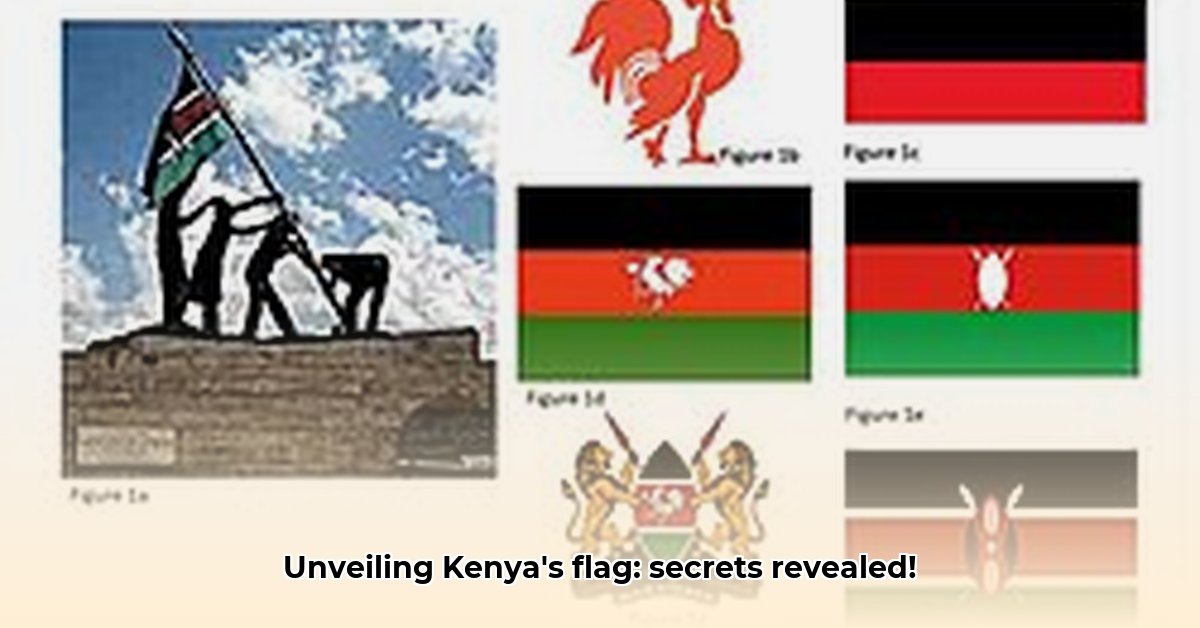
Imagine a vibrant splash of color against the azure African sky: the Kenyan flag. More than a pretty picture, it's a powerful symbol, a visual narrative of struggle, unity, and the enduring hope of a nation. This isn't just a history lesson; it's a journey into the heart of Kenya, exploring its creation, the battles it represents, and the evolving meanings of its colors and imagery. For more details, check out this comprehensive guide.
Kenyan Flag: A Story Woven in Color
The Kenyan flag, adopted in 1963, is a bold declaration of national identity. Its carefully chosen colors speak volumes about the nation's history and aspirations. The deep black represents the Kenyan people – a diverse population with a rich and complex heritage. It's a tribute to the many tribes and cultures that form the nation's vibrant tapestry. But what about the other colors? Why are they so significant?
The red symbolizes the blood shed in the arduous fight for independence from British colonial rule. It's a powerful reminder of the sacrifices and bravery of those who paved the way for a free Kenya. It's a visceral connection to a pivotal moment in their history. Did you know that the struggle for independence involved a complex interplay of political strategies and grassroots movements? This isn't just a simple narrative of conflict; it's a tapestry of resistance, resilience, and ultimately, triumph.
The lush green represents the fertile lands and rich agricultural heritage that have sustained generations of Kenyans. It's a symbol of prosperity, the bountiful landscape that nourishes its people. It speaks to the nation’s agricultural strength and its connection to the land. How has this agricultural heritage shaped the identity of Kenya? Its impact is profound and far-reaching, influencing everything from the country's economy to its cultural traditions.
Finally, the white represents peace and unity among all Kenyans – an aspiration for a harmonious future free from conflict and division. It symbolizes the ideal of a nation at peace with itself and its neighbors. Is this ideal fully realized today? The answer is nuanced, reflecting the ongoing challenges and complexities of nation-building.
The Maasai Shield and Spear: Guardians of the Nation
Beyond the colors, the heart of the Kenyan flag lies in its central imagery: the Maasai shield and two spears. This powerful symbolism is not merely decorative; it represents the spirit of Kenya itself. The shield, a symbol of protection for centuries, embodies the safeguarding of Kenya's land and people, representing its commitment to defending national sovereignty.
The two spears, poised and ready, powerfully symbolize the nation's preparedness to defend its hard-won freedom and independence. They are potent visual reminders of Kenya's resilience and determination to protect its sovereignty. What does this imagery convey about the Kenyan national character? It speaks to a deep-seated pride and an unwavering spirit of self-reliance.
Kenyan Flag History: A Political Journey
The Kenyan flag's creation wasn't a straightforward process. Its design evolved through extensive discussions, debates, and compromises among various political groups and factions. The initial designs were undoubtedly influenced by Pan-African ideals, but the final version reflects the intricate balancing of competing interests, showing the political negotiations that shaped the nation's identity. What compromises were made in the process? This question sheds light on the complexities of building a unified nation from diverse perspectives.
The Kenyan Flag: Evolving Meanings
The meaning of some elements has shifted over time. For instance, the thin white borders, initially representing Kenya’s diverse ethnic groups, now primarily stand for peace and unity. This evolution underscores the dynamic nature of national identity and how symbols can acquire new layers of meaning across different generations. How does this evolution reflect the nation's ongoing journey? Understanding this transformation reveals the living, breathing nature of national symbols.
A Symbol for the Future
The Kenyan flag is far more than a piece of cloth. It's a constant reminder of Kenya's journey, past, present, and future, uniting a diverse population under a single powerful banner. It's a symbol of the sacrifices made, the struggles overcome, and the hopes for a better tomorrow. It’s a beacon of national pride, flown with reverence across the nation, a daily reminder of shared identity and an enduring spirit. What does the future hold for Kenya, as symbolized by its flag? Its continued evolution reflects the nation's ongoing quest for unity and progress.
Key Considerations: A Deeper Dive
- Pan-African Influences: The design clearly echoes the Pan-African movements of the era, reflecting the global context of Kenya's independence.
- Political Negotiation: The final design is a testament to intense political maneuvering and compromise, illustrating the complex negotiations of nation-building.
- Ongoing Interpretation: The symbolism continues to be interpreted and reinterpreted by Kenyans, reflecting the ever-evolving national identity.
The Kenyan flag is not static; it's a powerful symbol, a living testament to the ongoing process of nation-building—a vibrant tapestry woven from threads of struggle, unity, and hope. It's a symbol worthy of study, understanding, and, above all, cherishing.